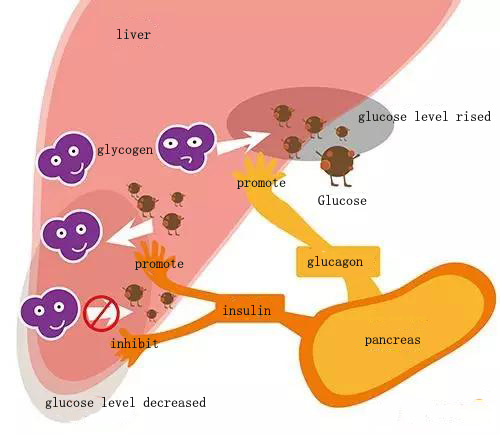Search Product
Structure Search
Search
Advantage Products
Location: Industrial Info
New Indication of Artemisinin——Diabetes
2016-12-05
来源:转载自第三方
5 December 2016
On December 1, forty scientists from Austria, USA, UK and Germany published a breakthrough study in the well-known journal <Cell>, "Artemisinins Target GABAA Receptor Signaling and Impair α Cell Identity", which showed that artemisinin can change glucagon α cells to insulin β cells, which may be able to save hundreds of millions of diabetics.
.jpg)
Diabetes is a comprehensive metabolic disease caused by insulin secretion defects because of a group of genetic factors, environmental factors and their interaction. The main feature is high blood glucose. It has become the world's most serious public Health problems. According to the published data of International Diabetes Federation last year, there are more than 450 million people worldwide suffer from diabetes, by 2025, 75% of diabetic patients will be concentrated in developing countries, by 2040, there will be about 642 million patients around the world.
The regulation of normal blood glucose concentration is mainly by the two hormones of insulin and glucagon at each level of mutual restraint to achieve: insulin produced by the islet β cells to promote the absorption of blood sugar, reduce blood glucose levels; and glucagon produced by the pancreatic islet β cells make endogenous blood glucose synthesis through the liver, increase blood sugar. In the islet, insulin and glucagon will interact each other's secretion based on the concentration of glucose, so as to achieve stable blood glucose concentration. Absolute and relative lack of insulin and the hyperactivation of the glucagon signaling pathway are two major causes of diabetes.

The current drug treatment for diabetes according to hypoglycemic mechanism can be divided into the following categories: sulfonylureas, such as tolbutamide, chlorpropamide, glibenclamide, glimepiride, etc.; biguanides, such as phenformin,metformin; GLP-1 receptor agonist; euglycemic agent, such as rosiglitazone, troglitazone, etc.; α-glucosidase inhibitor, such as acarbose, voglibose; insulin sensitizers, etc.; DPP-4 inhibitor vildagliptin (intermediate 3-amino-1-adamantanol); and various types of insulin.
Studies have shown that, when the extreme loss of β cells, α cells can supplement the insulin producing cells. In this transformation process, the epigenetic regulatory molecule Arx is a key molecule involved in the regulation of α cell function is essential to many genes. Its deletion will give new identity and function of α cells.
By testing compound libraries, the researchers found that artemisinin and Arx deletion produced the same effect: artemisinin combined with a protein gephyrin, which can activate the main signal cell switch——GABA receptor. Subsequently, numerous biochemical reactions change, eventually leading to the production of insulin.
.jpg)
In addition to cell experiments, artemisinin also demonstrated this effect in model organisms. β-cell of diabetic zebrafish, mice and rats increased by artemisinin administration, and blood glucose homeostasis improved. Because the molecular targets of artemisinin in fish, rodents and humans are very similar, the effect of artemisinin on α cells may also occur in humans.
Because the regeneration of human α cells is still unknown, and the new β cells must not be attacked by immune system, so artemisinin in the human body also need further testing, but the discovery of artemisinin and their role model has laid a very important foundation for the development of new treatments for diabetes.
Edited by the Editorial Office of Suzhou Yacoo Science Co., Ltd.
如果涉及转载授权,请联系我们。












